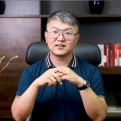六个时态的结构和时间状语
问题描述
- 精选答案
-

一般现在时:I read this book everyday.我每天都读这本书。
The earth moves around the sun.地球绕着太阳转。(公理、定理等)I don't want to go there.我不想去那里。I love beautiful music.我喜欢优美的音乐。Do you have your own e-mail?你有自己的邮箱吗?一般过去时:I went back home yesterday.我昨天回家了。They bought it for me as a present.他们为我买了这个作为礼物。She didn’t go to school last Monday.她上个周一没有去学校I was student 10 years ago.我十年前曾是个学生。My brother won a basketball game last week.我哥哥上周赢了一场篮球比赛。现在进行时:I'm standing under the tree.我正站在树下。I’m waiting for another bus.我正在等另一辆公共汽车。She is watching TV at home.她正在家里看电视。The teacher is telling stories to the students.老师正在为学生讲故事。Are you walking to the supermarket?你正走去超市吗?一般将来时:I will do my homework tomorrow.我将会在明天做我的作业。The sport-meeting is going to be held next month.运动会将会在下个月举行。Our family is having a trip tomorrow.我们一家明天要去旅行。All will be prepared for the party.所有派对要用的东西都将会准备好。The cake will be ate up soon.蛋糕很快就会被吃光了。时态详解 一般现在时基本形式(以do为例):第三人称单数:does(主语为非第三人称单数); 肯定句:主语+动词原形+其他; He works for us.否定句:主语+don‘ts/doesn't+动词原形+其他; He doesn't work for us.一般疑问句:Do/Does+主语+动词原形+其他; 肯定回答:Yes,(+ 主语+do/does);否定回答:No,(+主语+don't/doesn't.); 特殊疑问句:疑问词+一般疑问句语; Does he work for us? Yes, he does. No, he doesn'tWhat does he do for us? He works for us.一般过去时be动词+行为动词的过去式否定句式:在行为动词前加didn’t,同时还原行为动词,或was/were+not;was或were放于句首;用助动词do的过去式did提问,同时还原行为动词;例如: Did he work for us? He didn't work for us. He worked for us.一般将来时am/are/is+going to+do 或 will/shall+doam/is/are/about to + do am/is/are to + do; 一般将来时的表达方法 be going to +动词原形 be +不定式,be to+动词原形,be about to +动词原形 be able to +不定式 be about to+动词原形 will + 动词原形;例如:He is going to work for us. He will work for us;He is coming.这是特殊的用一般现在时 表达 将来时态 的例子!!过去将来时be(was,were)going to+动词原形be(was,were)about to+动词原形be(was,were)to+动词原形肯定句:主语+be(was,were)going to+动词原形~.否定句:主语+be(was,were)not going to+动词原形~.疑问句:Be(Was,Were)+主语+going to+动词原形~?肯定句:主语+would(should)+动词原形~.否定句:主语+would(should)not+动词原形~.疑问句:Would(Should)+主语+动词原形~? He would work for us.现在进行时主语+be+v.ing〔现在分词〕形式(其中v表示动词) 表示现在正在进行的动作或最近在做的事。 例如:I am buying a book. 第一人称+am+doing+sth第二人称+are+doing +sth (doing是泛指所有的v-ing形式)第三人称+is+doing+sth 例:He is working.过去进行时肯定句:主语+was/were+doing+其它否定句:主语+was/were+not+doing+其它一般疑问句及答语:Was/Were+主语+doing+其它 ;答语:Yes,I主语+was/were./No,I主语+wasn't/weren't.特殊疑问句:特殊疑问词+was/were+主语+doing+其它 He was working when he was alive.将来进行时主语+will + be +现在分词He will be working for us.=He will work for us. 过去将来进行时should(would)+be+现在分词He said that he would be working for us.=He said that he would work for us. 现在完成时基本结构:主语+have/has+过去分词(done)①肯定句:主语+have/has+过去分词+其他②否定句:主语+have/has+not+过去分词+其他 ③一般疑问句:Have/Has+主语+过去分词+其他④特殊疑问句:特殊疑问词+一般疑问句(have/has+主语+过去分词+其他\\He has worked for us for ten years. Has he worked for us for ten years. 过去完成时基本结构:主语+had+过去分词(done) ①肯定句:主语+had+过去分词+其他②否定句:主语+had+not+过去分词+其他 ③一般疑问句:Had+主语+过去分词+其他 肯定回答:Yes,主语+had 否定回答:No,主语+hadn't④特殊疑问句:特殊疑问词+一般疑问句(had+主语+过去分词+其他)语法判定:( 1 ) by + 过去的时间点。如:I had finished reading the novel by nine o'clock last night. ( 2 ) by the end of + 过去的时间点。如: We had learnt over two thousand English words by the end of last term.( 3 ) before + 过去的时间点。如:They had planted six hundred trees before last Wednesday. 将来完成时(shall)will+have+动词过去分词 before+将来时间或by+将来时间before或by the time引导的现在时的从句He will have worked for us.=He will work for us. 过去将来完成时should / would have done sth.He said that he would have worked for us.=He said that he would work for us.现在完成进行时基本与现在完成时相同,但是现在完成进行时只能表示仍然持续的概念have/has been +-ing 分词He has been working for us for ten years.=He has worked for us for ten years.过去完成进行时had been +-ing 分词He said that he had been working for us for ten years.=He said that he had worked for us for ten years. 将来完成进行时主语+ shall/will have been doingHe will have been working for us.=He will work for us.翻译为:他最近一直在为我们工作(过去在工作,现在在工作,将来还会工作)过去将来完成进行时should+have been+现在分词用于第一人称would have been+现在分词用于其他人称He said that he would have been working for us.=He said that he would work for us.举例: 英语中有12个主要时态,都来自于三时(过去、现在、将来) 时态范例现在以I listen为例,举例英语中有12个主要时态如下所示:一般现在时:I listen 现在进行时:I am listening 过去进行时:I was listening 现在完成时:I have listened现在完成进行时:I have been listening一般将来时:I shall listen”或“I will listen.”将来进行时:I shall be listening 一般过去时:I listened过去完成时:I had listened过去完成进行时:I had been listening将来完成时: I shall have listened将来完成进行时: I shall have been listening
- 其他回答
-
时态是一种动词形式,不同的时态用以表示不同的时间与方式。在英语中,共有 16 种时态,其中常用的有 6 种,分别是:一般现在时、一般过去时、一般将来时、现在进行时、过去进行时、现在完成时。以下是这六个时态的结构和时间状语:
1.一般现在时
- 结构:主语+动词原形(主语为第三人称单数时,动词要用第三人称单数形式)
- 时间状语:always, usually, often, sometimes, every day, once a week, etc.
2.一般过去时
- 结构:主语+动词过去式
- 时间状语:yesterday, last week, two years ago, in 1990, etc.
3.一般将来时
- 结构:主语+will/shall+动词原形;主语+be going to+动词原形
- 时间状语:tomorrow, next week, in the future, etc.
4.现在进行时
- 结构:主语+am/is/are+动词的-ing 形式
- 时间状语:now, at the moment, etc.
5.过去进行时
- 结构:主语+was/were+动词的-ing 形式
- 时间状语:at this time yesterday, from 8:00 to 10:00 yesterday, etc.
6.现在完成时
- 结构:主语+have/has+过去分词
- 时间状语:already, yet, just, ever, never, for+一段时间, since+过去的时间点, etc.
需要注意的是,不同的时态有不同的用法和含义,在使用时需要根据具体情况进行选择。
- 其他回答
-
一般现在时:结构为主语 + 动词原形;时间状语可以是每天、经常、通常等。一般过去时:结构为主语 + 动词过去式;时间状语可以是昨天、过去的某个具体时间点。一般将来时:结构为主语 + will + 动词原形;时间状语可以是明天、将来的某个具体时间点。现在进行时:结构为主语 + am/is/are + 现在分词;时间状语可以是现在、目前、此刻等。过去进行时:结构为主语 + was/were + 现在分词;时间状语可以是过去的某个时间段。将来进行时:结构为主语 + will be + 现在分词;时间状语可以是将来的某个时间段。在学习英语的过程中,时态是一个非常重要的语法知识点。掌握不同时态的结构和时间状语能够帮助我们正确地表达过去、现在和将来的动作和状态。例如,当我们想要描述现在正在进行的动作时,可以使用现在进行时,结构为主语 + am/is/are + 现在分词,时间状语可以是现在、目前、此刻等。而当我们想要描述过去发生的动作时,可以使用一般过去时,结构为主语 + 动词过去式,时间状语可以是昨天、过去的某个具体时间点。通过不同时态的使用,我们能够更准确地表达我们的意思。















